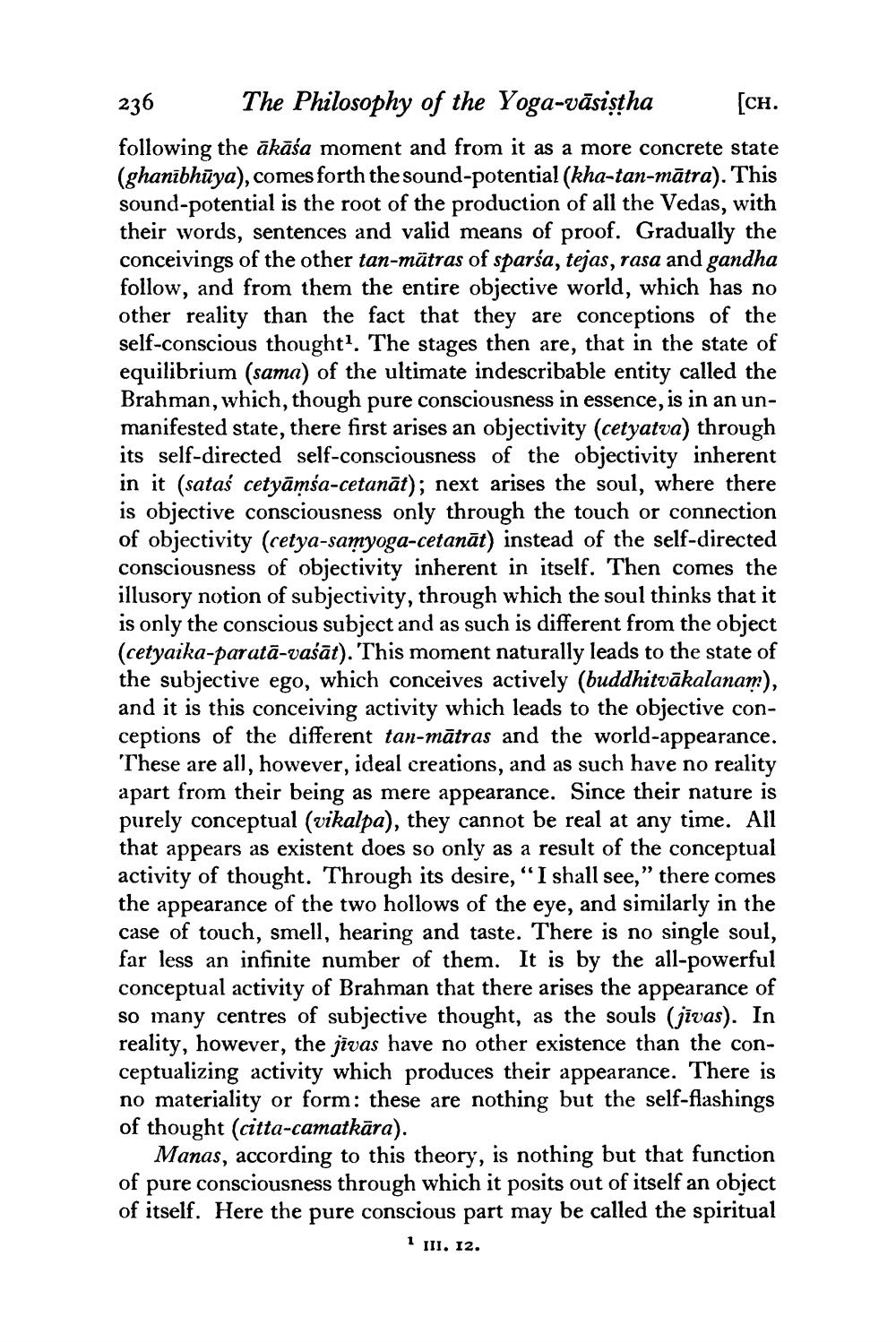________________
236 The Philosophy of the Yoga-vāsistha [CH. following the ākāśa moment and from it as a more concrete state (ghanībhūya), comes forth the sound-potential (kha-tan-mātra). This sound-potential is the root of the production of all the Vedas, with their words, sentences and valid means of proof. Gradually the conceivings of the other tan-mätras of sparśa, tejas, rasa and gandha follow, and from them the entire objective world, which has no other reality than the fact that they are conceptions of the self-conscious thought?. The stages then are, that in the state of equilibrium (sama) of the ultimate indescribable entity called the Brahman, which, though pure consciousness in essence, is in an unmanifested state, there first arises an objectivity (cetyatva) through its self-directed self-consciousness of the objectivity inherent in it (sataś cetyāmsa-cetanāt); next arises the soul, where there is objective consciousness only through the touch or connection of objectivity (cetya-samyoga-cetanāt) instead of the self-directed consciousness of objectivity inherent in itself. Then comes the illusory notion of subjectivity, through which the soul thinks that it is only the conscious subject and as such is different from the object (cetyaika-paratā-vaśāt). This moment naturally leads to the state of the subjective ego, which conceives actively (buddhitvākalanam), and it is this conceiving activity which leads to the objective conceptions of the different tan-mātras and the world-appearance. These are all, however, ideal creations, and as such have no reality apart from their being as mere appearance. Since their nature is purely conceptual (vikalpa), they cannot be real at any time. All that appears as existent does so only as a result of the conceptual activity of thought. Through its desire, “I shall see," there comes the appearance of the two hollows of the eye, and similarly in the case of touch, smell, hearing and taste. There is no single soul, far less an infinite number of them. It is by the all-powerful conceptual activity of Brahman that there arises the appearance of so many centres of subjective thought, as the souls (jīvas). In reality, however, the jīvas have no other existence than the conceptualizing activity which produces their appearance. There is no materiality or form: these are nothing but the self-flashings of thought (citta-camatkāra).
Manas, according to this theory, is nothing but that function of pure consciousness through which it posits out of itself an object of itself. Here the pure conscious part may be called the spiritual
1 II. 12.




